Mrs Everybody has finally got back to her blogging. She has been busy preparing her accounts. Now all her papers are in neat piles and Mrs Everybody is happy. Well quite happy. Mrs Everybody is a bit concerned about something...
'On the return flight from the last research trip to Morocco, the air hostesses announced that they were spraying the cabin with insecticide. Then they did it. I sat flabbergasted in my seat holding my hands over my face, a rather futile gesture. Once the air hostess had performed her duty, I managed to read the ingredient on the empty bottle which it said had been approved by WHO, the World Health Organisation. The staff were concerned about using it and I promised the hostess with bloodshot eyes that I would look into it and if necessary publish something on it.'
Pesticides have been used inside plane cabins and holds for more than 45 years to help prevent the spread of yellow fever and malaria. Synthetic insecticides, mainly based on the pyrethroid family are the EU pesticides of choice although they are classed an irritant and dangerous for the environment. A typical aircraft cabin pyrethroid pesticide might contain something like, 2.9% pyrethroid by weight (pyrethroids masquerade under many different synonyms), 57.1% isoparaffinic solvent and 40% HFC R 134a propellant. In its most recent evaluation (2005) of the safety of pyrethroids used for aircraft 'disinsection,' that is the spraying of aircraft, WHO concluded, 'paraesthesias and, in inhalation exposure, upper respiratory tract irritation, . . . may occur among aircraft passengers and crew after in-flight spraying and among crew after pre-flight spraying . . . while they may cause transient discomfort, pyrethroids do not indicate or predict serious health effects.' Besides omitting many of the symptoms, the conclusion seems rather wishful.
Permethrin (a pyrethroid insecticide), the pesticide sprayed on the Everybodys while they were strapped in their seats, is a neurotoxin, and yes, it does kill insects but it is also highly toxic to bees, fish and aquatic systems. It is also used in dog flea treatments, insecticidal room sprays, timber treatments, in human medications as well as on stored grain. Permethrin and several other similar insecticides are highly toxic to cats and there is no antidote. Cats are often accidentally poisoned when pet owners use dog flea compounds on their cat, or when the freshly medicated family dog, or the dog's bedding contaminates the cat. Pesticides such as Permethrin are sticky and traces will remain on clothes even when they are laundered with normal frequency over two weeks. After one spraying, traces have been found in a test room after two years. As well as, or instead of regular in flight spraying, the whole of the cabin is sprayed at saturation levels about every eight weeks to give high residual levels. About 90 countries allow the use of disinsection - whether they do it in front of you or before you board the airplane. Anyone who reads the label of any pesticide for indoor use can read the safety precautions to open the windows and vacate the room after spraying - however don't try to take these precautions while flying.
It wouldn't be surprising if many travellers or air hostesses experience reactions after the spraying - numbness, itching, tingling, burning eyes, memory loss, confusion, skin rashes, dizziness, diarrhoea and vomiting but do not identify the cause, because the poison becomes more effective in the body in the hours or days following exposure. Pesticides have also been linked to Parkinson's disease, cancer and they have effects on the endocrine, reproductive and digestive systems. Permethrin can cause sever reactions in asthmatics and people with allergies and heart conditions. Permethrin has been found in breast milk, and flights will carry many nursing mothers and people of child bearing age and it takes about 12 days for the human body to eliminate this toxin. There seemed to be no necessity for the flight operators to openly inform the ticket holders that chemical sprays will be used, so they are allowed to mass medicate without out the travellers express permission or even prior knowledge. Most airlines will let you know about their mandatory and voluntary pesticide spraying practises if you ask them in advance, but there is little you can do to stop the spraying even if you carry a doctor's certificate saying that you are likely to have an adverse reaction. I would avoid any discussion with the aircrew immediately before take off, because you will probably be removed from the plane. In the USA several airline staff have won claims after their health has been ruined through repeated spraying.
What are the alternatives?
The routine spraying of pesticides in airplanes has been banned in America in 1994 following reports of illness among air hostesses, and studies have subsequently shown that since the ban, rates of malaria and yellow fever caused by vector transfer (insect stowaways) has not increased. However a WHO report does provide some evidence from 1984 and earlier of 'airport malaria.' DEFRA (Department of the Environment, Food, Rural Affairs) has announced that Permethrin is due to be phased out and has been testing other pesticides. However it would be better if we could find a way to control insect stowaways without simply replacing it with another new chemical.
'Air curtains,' strong flows of air directed at doorways are effective at preventing insects entering airplanes are present one of the most promising solutions, but there doesn't seem to be any in current commercial use. I hope I am wrong! In tests, air curtains are more effective than pesticides in controlling insects stowaways.
In the meantime, wear a mask and head covering through the exposure, or bring a blanket to cover yourself with. Wash hands, exposed skin, and children's toys after leaving the airplane. Get your clay out and wash you hair and body thoroughly once you get home. Wash all the clothes and blankets taken on the journey and the luggage.
Make a careful note of the product used, with the principle ingredient, the concentration and manufacturer details in case you do have a reaction to it after you have left the airplane. Permethrin, like all of the pyrethroids parades under several different names. There are about 70 synonyms for Permethrin running right through the alphabet, well A to W to be exact.
If you do have any reactions which you think may be linked to in cabin insecticide exposure, report it to you doctor, complain to the airline asking them to take action. Complain also to the manufacturer and make sure that it is logged and actioned. Photograph your reaction and keep a record of the flight number, flight times etc, all correspondence and communications. An international organisation call PAN UK or PANNA in the USA (Pesticide Action Network) provides briefings for victims of pesticide exposure. There are also lots of other organisations which run campaigns against pesticide use.
If you work on an airplane and think that you may be affected, keep a precise diary of your symptoms see your doctor, and keep seeing your doctor if there is no improvement.
Travel by train.
References:
Norman G. Gratz,1 Robert Steffen,2 & William Cocksedge, 2000, Why aircraft disinsection? Bulletin of the World Health Organization, 2000, 78 (8)
Howell, J., after 2006, A tale of two cities - Safety testing in Britain and Germany, PAN International
Riley, B., December 1998 (updated June 2002), Flyers Beware: Pesticide Use on International and U.S. Domestic Aircraft and Flights, Northwest Coalition for Alternatives to Pesticides.
Sutton, P.M., Vergara, X., Beckman, J., Nicas, M. Das, R, Pesticide Illness Among Flight Attendants Due to Aircraft Disinsection, American Journal of Industrial Medicne, 50:345-356 (2007),
Log in
We've sent you an email with a link to update your password.
My Account - Log In
Reset your password
We will send you an email to reset your password.
Cart (£0.00)
-
Menu
- Face & Body
- Hair
- Dental
- Eco Cleaning
- Water Purification
- Sponges
- Enamelware
- Plant Care
- Pet Care
- About
- Eco Cleaning
- All Cleaning Products
- Laundry
- Water Purification
- Bottle Brushes
- Eco-Friendly Sponges
- Natural Detergents
- Sponges
- Face Care Sponges
- Sponges For Arts & Crafts
- Sponges For Bath and Shower
- Sponges for Cleaning
- Wonky Sponges
Regional settings
We've sent you an email with a link to update your password.
My Account - Log In
Reset your password
We will send you an email to reset your password.
Fast, Safe Shipping
With a wide range of fast shipping options at checkout, you can get your order delivered quickly & safely.
Buy Now, Pay Later Options
Get your Natural Spa Supplies order now and pay later with our Buy Now, Pay Later options at checkout.
5* Customer Service
Impeccable customer service is guaranteed from the moment you place your order to the moment in lands at your door and beyond!
Secure Payments
We offer a wide range of Secure Payment methods at checkout to help you shop safely online.
Sign up for our Newsletter
Get updates, how-to tips, and coupons delivered straight to your inbox!
By completing this form, you are signing up to receive our emails and can unsubscribe at any time.

